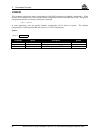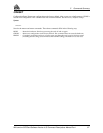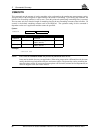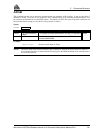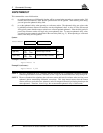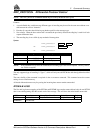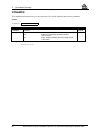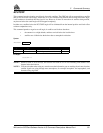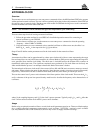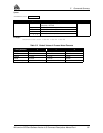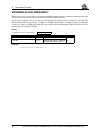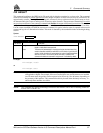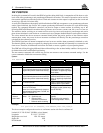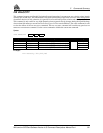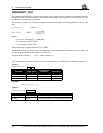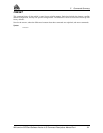
C Commands Summary
94 MiLLennium GPSCard Software Version 4.50 Command Descriptions Manual Rev 1
EXTERNALCLOCK
Overview
The EXTERNALCLOCK and EXTERNALCLOCK FREQUENCY commands allows the MiLLennium GPSCard to operate
with an optional external oscillator. The user is able to optimally adjust the clock model parameters of the GPSCard
for various types of external clocks. The three-state clock model on GPSCards having access to this command is
different from that used on the other GPSCards.
NOTE: The EXTERNALCLOCK command will affect the interpretation of the CLKA/B log.
There are three steps involved in using an external oscillator:
1. Follow the procedure outlined in your GPSCard’s installation/operation manual for connecting an
external oscillator to your GPSCard.
2. For the chosen oscillator type, use the
EXTERNALCLOCK FREQUENCY command to select the operating
frequency – either 5 MHz or 10 MHz.
3. Using the
EXTERNALCLOCK command, select a standard oscillator or define a new one; the effect is to
define h
0
, h
-1
, and h
-2
in the expression for S
y
(f) given below.
Steps #2 and #3 define certain parameters used in the clock model for the external oscillator
Theory
An unsteered oscillator can be approximated by a three-state clock model, with two states representing the range
bias and range bias rate, and a third state assumed to be a Gauss-Markov (GM) process representing the range bias
error generated from satellite clock dither. The third state is included because the Kalman filter assumes an
(unmodeled) white input error. The significant correlated errors produced by SA clock dither are obviously not
white and the Markov process is an attempt to handle this kind of short-term variation.
The internal units of the new clock model’s three states (offset, drift and GM state) are meters, meters per second,
and meters. When scaled to time units for the output log, these become seconds, seconds per second, and seconds,
respectively. Note that the old units of the third clock state (drift rate) were meters per second per second.
The user has control over 3 process noise elements of the linear portion of the clock model. These are the h
0
, h
-1
,
and h
-2
elements of the power law spectral density model used to describe the frequency noise characteristics of
oscillators:
where f is the sampling frequency and S
y
(f) is the clock’s power spectrum. Typically only h
0
, h
-1
, and h
-2
affect the
clock’s Allan variance and the clock model’s process noise elements.
Usage
Before using an optional external oscillator, several clock model parameters must be set. There are default settings
for a voltage-controlled temperature-compensated crystal oscillator (VCTCXO), ovenized crystal oscillator
(OCXO), Rubidium and Cesium standard; or, the user may choose to supply customized settings.
S
y
f()
h
2–
f
2
-------
h
1–
f
-------
h
0
h
1
fh
2
f
2
++++=



